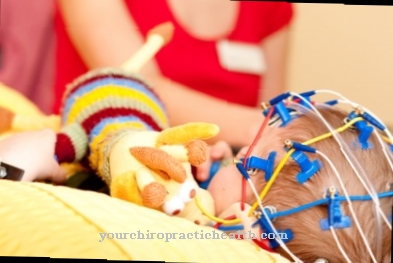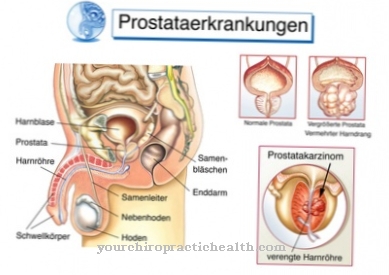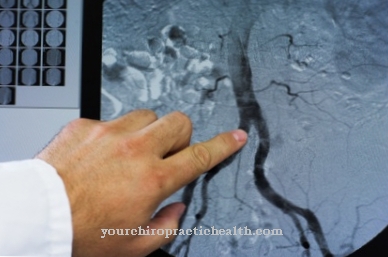The pedicure is a medical foot care to keep the skin of the feet healthy with special consideration of toenails and calluses. In many cases, foot care is carried out at home on your own. Professional foot care by trained specialists is called podiatry.
What is the pedicure?

The word pedicure comes from the Latin syllable pes or pedis, which translates as foot. This makes the cosmetic pedicure the counterpart to the manicure, the hand care. The feet are heavily used every day and exposed to great stress. If care is neglected, calluses, toenails that are too long, fungal diseases or sweaty feet can develop. First and foremost, cosmetic foot care has prophylactic functions, as it prevents the occurrence of these symptoms through regular use.
With the support of foot care products, a podiatry application is also used for general cleaning and deodorization of the feet. Today it is recommended that foot care is no longer carried out on your own, but only by specially trained specialists in podiatry practices. Too often laypeople overlook possible errors and dangers of improperly performed foot care. That is why today a distinction is made between medical and cosmetic pedicures. Cosmetic foot care at home is only seen as a supplement to medical foot care by the podiatrist.
Function, effect & goals
In the subject catalog of training to become a podiatrist, possible approaches to extensive medical foot care are presented. However, there are expressly no standards, which means that some podiatry practices only work on previously soaked feet, while others only work on dry feet. The pedicure is not an invention of modern times, as some Egyptian wall paintings impressively demonstrate.
Since professional podiatrists have been trained as podiatrists with state approval in Germany, the terms cosmetic foot care and pedicure have been assigned to the cosmetic field for self-application. Training to become a podiatrist is regulated by law in Germany, and the professional title of podiatrist is protected by law. Anyone who worked as a medical podiatrist before the law was introduced will enjoy grandfathering for a transitional period. Training to become a podiatrist is a matter for the country and lasts between 2 and 3 years.
A pedicure involves several steps that can be performed in sequence to achieve the goal of well-groomed feet and well-groomed toenails. The procedure usually begins with a neutral, warm foot bath lasting up to 20 minutes. Deodorant or callus-dissolving bath additives can be added to the foot bath. After careful drying, the toenails are first cut with nail scissors and nail files or with an electronic pedicure set. This set contains special diamond cutters for grooming and shortening the toenails.
Corns, if any, are then removed and calluses from the cornea and dead cuticles carefully removed. Since the risk of injury is relatively high, it is recommended that it be performed in a podiatry practice. After the feet have been gently massaged and covered with a fatty cream in the last step, the toenails can be painted. Different additives can be used depending on the condition of the feet. The use of special nail fold tinctures, agents against nail fungus or corns fall under the spectrum of medical foot care, podiatry.
Means for care, cleaning and deodorization can be assigned to cosmetic pedicures. Foot balm with coordinated invigorating ingredients scents and disinfects the skin of the feet after a care procedure. The upstream foot bath refreshes and promotes the softening of the cornea, which can then be easily removed with a special scraper. Foot baths with deodorizing additives also serve to reduce perspiration and odor problems.
Cosmetic preparations for the feet often contain camphor, lavender and fat-containing creams. The care products are to be used sparingly in order to avoid over-greasing and to make it easier for them to be absorbed into the skin. The use of foot powder can also be part of the pedicure. It absorbs more moisture and therefore works against sweat and foot odor.
Risks, dangers & special features
A pedicure always harbors risks and dangers if it is used improperly or if the pathology of the feet is not taken into account. The greatest danger comes from micro-injuries caused by planing or cutting tools during foot care. These skin injuries, which are often invisible, represent entry points for various pathogens, which in turn can lead to dangerous infections.
Therefore, under no circumstances should invisible or visible tissue bleeding occur during a pedicure. In otherwise healthy people, these small wounds will usually heal and have no other consequences other than leaving scars. For pre-damaged patients with diabetes or hemophilia, even the smallest micro-injuries can become a serious medical problem.
So-called diabetic feet should therefore only be treated by trained podiatrists. In the podiatry practice, an anamnesis is carried out before each treatment so that increased care is guaranteed when performing foot care in the case of known diabetes or other relevant diseases. All pedicure cutlery must be thoroughly cleaned and disinfected beforehand. In podiatry practice, the statutory regulations also require sterilization when reusing medical parts for pedicures. If only disposable items are used, there is no obligation to sterilize them. Dangerous diseases such as hepatitis C or MRSA can be transmitted through infected cutlery during pedicures.



























